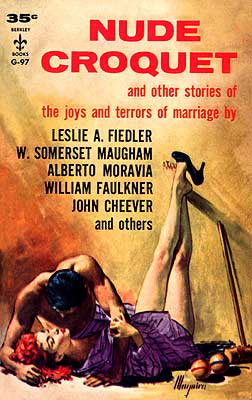
It's a beautiful morning here in the horse country of north central Florida. The sunlight is slanting through the buds on the oaks [the tiny, almond-shaped oak leaves here look far different from the large, splayed leaves of my youth in Pennsylvania, and from what I've seen of oaks in the U.K.] and the birds all seem to calling for their mates.
My mate, Janet, is out getting her hair styled, but were she here, I'd still be thanking here for my new gift: A first edition copy of King Willow, again signed by the author, that arrived yesterday evening. I'd had my eye on it, but thought it was too much money. I was stunned when I opened the package from Canterbury, Kent, and pulled out this well-worn, even slightly beat-up edition. I simply adore it!
 Yesterday I wondered aloud about the missing years in my time line of George Mills, and was contemplating writing an entry about his grandfather, Arthur Mills. In lieu of new information about Mills himself, I thought providing some context into which I could situate the life of George would be a logical next step. There are a number of people who would have known G.M. and who would have undoubtedly influenced him, even if they had no influence over him directly.
Yesterday I wondered aloud about the missing years in my time line of George Mills, and was contemplating writing an entry about his grandfather, Arthur Mills. In lieu of new information about Mills himself, I thought providing some context into which I could situate the life of George would be a logical next step. There are a number of people who would have known G.M. and who would have undoubtedly influenced him, even if they had no influence over him directly.Thumbing through this not-so-gently-used copy of King Willow, it immediately struck me what a beautiful book this must have been in its day, sort of the same feeling I get when I see, for example, Elizabeth Taylor on the cover of a gossip tabloid at the supermarket. Published by George G. Harrap & Co. Ltd., the often browned, stained, and worn pages of this book must have been gorgeous in their day. The paper is still wonderfully stiff and still has a "tooth," or texture, that makes it a pleasure to touch. The author's inscription reads: "To Barbara and Raymond Dones—with best wishes—George Mills July 1938," and is written in what appears to be fountain pen ink that's a rich sepia.
[Note (26 Apr 2010): When my wife ordered the text, there had been a note on the internet saying: SIGNED presentation copy by the author to the front free end paper 'To Barbara and Raywood, With best wishes George Mills, July 1938.' I'll admit: What do I know about British penmanship, circa 1938? Nothing! But if I'd read it myself, I'd have assumed it was Raymond. I didn't change it, though, and put on the web just as the bookseller indicated. I am now assured that it does indeed say Raymond, and many thanks to Barry McAleenan for the chirographic advice!]
It's illustrated by H. M. [Henry Matthew] Brock, brother of the legendary C.E. Brock and a fine illustrator, graphic designer, and painter in his own right as
 just a glance it the work throughout this edition will ascertain. He's fully credited as the illustrator immediately below the name of George Mills on the title page, and as well as a full-colour frontispiece and 4 full-page plates, he did several other decorative illustrations, and example of which is seen to the left.
just a glance it the work throughout this edition will ascertain. He's fully credited as the illustrator immediately below the name of George Mills on the title page, and as well as a full-colour frontispiece and 4 full-page plates, he did several other decorative illustrations, and example of which is seen to the left.What truly surprised me, however, were not only the difference in quality between this edition of King Willow and the other edition, circa 1958 or so, but the dedication and preface. In this earlier edition, Mills has given me a location for himself and his wife in the time that elapsed between 1938 and the publication of Meredith and Co. back in 1933!
Right now, I'll focus on the dedication to the 1958-ish edition that was the first book by Mills I'd ever seen: "To BERYL and IAN, Two young people who have just set out on a long voyage in the good ship Matrimony. May they have smooth seas and following winds: may they from time to time take aboard some young passengers who will become the light of their lives until they sail into the last harbor."
 Now, I'd been working on finding a young Ian and Beryl, likely in Great Britain, just before the publication of this book in 1938. Needless to say, I wasn't having much luck. The dedication seemed wistfully hopeful, coming from what I assumed was a 40-ish man who'd seemingly been married to Vera Mills for 10 or 12 years at that point, depending on the actual, unspecified date of Beryl and Ian's nuptials. It made me smile.
Now, I'd been working on finding a young Ian and Beryl, likely in Great Britain, just before the publication of this book in 1938. Needless to say, I wasn't having much luck. The dedication seemed wistfully hopeful, coming from what I assumed was a 40-ish man who'd seemingly been married to Vera Mills for 10 or 12 years at that point, depending on the actual, unspecified date of Beryl and Ian's nuptials. It made me smile.In those assumptions, it turns out, I must have been entirely mistaken!
Here's the dedication to the first edition of King Willow, which Mills himself dates in the book's preface as June, 1938: "TO THE HEADMASTERS, STAFF, AND BOYS OF EATON GATE PREPARATORY SCHOOL, LONDON, S.W. 1."
 Not only does that provide us with a location for Mills and Vera during the span of time between the 1933 publication of Meredith and Co. and its stand-alone 1938 sequel, King Willow, it also puts a completely different spin on the dedication in that late-1950s edition. Beryl and Ian, it seems, were not married near the end of the worldwide Great Depression; they were likely born at that time. Their ship, Matrimony, likely set sail just after the Korean Conflict in the middle of the 20th century, not in the years leading up to the Second World War.
Not only does that provide us with a location for Mills and Vera during the span of time between the 1933 publication of Meredith and Co. and its stand-alone 1938 sequel, King Willow, it also puts a completely different spin on the dedication in that late-1950s edition. Beryl and Ian, it seems, were not married near the end of the worldwide Great Depression; they were likely born at that time. Their ship, Matrimony, likely set sail just after the Korean Conflict in the middle of the 20th century, not in the years leading up to the Second World War.The subtext of the later dedication changes now as well. The latter version is now written by a childless, 60-ish man, over 15 years a widower, watching two youngsters embarking on a journey together that he'd set out on with Vera over a quarter of a century earlier. There are no children of theirs have become the light of his life as he charts his own course, alone, into his own last harbor.
Of course, I labor under the assumption that George Mills never remarried and remained childless. If he did, all of the above is completelt in error, and yet another spin is put on his metaphorical bon voyage to Ian and Beryl.
 Another bit of information implied by the late-1950s dedication would be that, seemingly for the first time, Mills has not dedicated a book to a school. My inference is that, by the time of the Fanfare and Viscount Series' Czechoslovakian reprints of his three best-loved stories, Mills has retired. I've not seen a copy of every edition of his three prep school books, nor have I ever seen a copy of his children's book St. Thomas of Canterbury. I'll speculate, however, that when Meredith and Co. was published in 1957 by Andrew Dakers Ltd. with exactly the same preface and dedication found in the 1950 edition [each just relocated within the text], it hadn't occurred to Mills at that point that he could rewrite them—or at least he'd felt no need to until the wedding of Beryl and Ian.
Another bit of information implied by the late-1950s dedication would be that, seemingly for the first time, Mills has not dedicated a book to a school. My inference is that, by the time of the Fanfare and Viscount Series' Czechoslovakian reprints of his three best-loved stories, Mills has retired. I've not seen a copy of every edition of his three prep school books, nor have I ever seen a copy of his children's book St. Thomas of Canterbury. I'll speculate, however, that when Meredith and Co. was published in 1957 by Andrew Dakers Ltd. with exactly the same preface and dedication found in the 1950 edition [each just relocated within the text], it hadn't occurred to Mills at that point that he could rewrite them—or at least he'd felt no need to until the wedding of Beryl and Ian.Still, although the two different dedications imply much still to be considered and researched, Mills has definitely pinned himself down to London, S.W. 1, for at least some portion of the time between 1933 and 1938, and without any other school named in this dedication, it suggests that perhaps Mills had finally found a position as a schoolmaster that lasted for a while.
Eaton Gate Preparatory School becomes the next focus of our investigation, although I hope to still learn much more about G.M. from Windlesham and Eastbourne.
As always, please let me know if you have any thoughts, suggestions, or information!


![Meredith and Co. [1933] by George Mills](https://blogger.googleusercontent.com/img/b/R29vZ2xl/AVvXsEjlUeRNPnH8Xd8JT59QdtabQHRI6DI6Hqew57i6qixjOL3LjgUD9g22o3-wNlmBya36D5-6KZXX-sxLnktAfEqjlvTmdwyiIL2K6VHOGW2Wq9Pe8_oFGknENfVE1Xrkdj0b8FYXTz_6SMg/s1600-r/sm_meredith_1933.JPG)
![King Willow [1938] by George Mills](https://blogger.googleusercontent.com/img/b/R29vZ2xl/AVvXsEgiz_iaQjinIbVw6yQ-W4hwx6wGJwMQH9azCs3Qacp9eX627B7Eq9hMn1wlHLzlkbcflHRWM8VcPX-1uteKbs4LA5q5Oq69WhrnhzBQLjpseK_M34PSoOOhTZ96EfVAGFehG53gZ0M4EvU/s1600-r/sm_1938.JPG)
![Minor and Major [1939] by George Mills](https://blogger.googleusercontent.com/img/b/R29vZ2xl/AVvXsEgH5nj4Q6BNpzVEb1vyJeGV6ikuN4SFAyDa-jypIgbvdrxqcjHkNxqjrXH7ptZmge7oTTpn5QjAI0yCJPdI-fIzooCDD1TAA3RDxO9jzLcU3QOIhBWKiKNz6CPjCSTZgIPd9_4zM7LLpAw/s1600-r/sm_1939.JPG)
![Meredith and Co. [1950] by George Mills](https://blogger.googleusercontent.com/img/b/R29vZ2xl/AVvXsEgm_JPAXPpX0wb8bDkjYG67Sg1HePiPhRP6b9oUMWvkJhiW6XJzmxTQ7TBepfxpPgRrFNCRuumYRj-SAfU9Kw-uDsbO5HBtyxfQfClHVMJxJUkDpbkrCPhzpC4H_g_ctlirgnSla4vX1EQ/s1600-r/sm_1950.JPG)
![Meredith and Co. [1957?] by George Mills](https://blogger.googleusercontent.com/img/b/R29vZ2xl/AVvXsEg0zRm3-CCmA8r2RrBmrACDvmxJjoBjfxUoPI9yc6NWu1BZ3dd89ZvCixmmKZe1ma0QiDIrsDZNqf-8h1egh0JLiRYHagXAqQ1UknWPy6SksK76psYPcEMLGa_Aj7wo2vMFPo0aMdcx_pg/s1600-r/sm_meredith.JPG)













No comments:
Post a Comment